ducted air conditioning

Future Trends in Control System Integration for Ducted Air Conditioning
The growing emphasis on sustainability is propelling the integration of renewable energy sources within air conditioning systems. Solar power emerges as a particularly viable option due to its accessibility and potential for substantial cost savings ...
Read more →
Remote Access and Monitoring in Control System Integration for Ducted Air Conditioning
The emergence of sophisticated technologies has propelled the capability of real-time monitoring solutions, significantly enhancing the management of ducted air conditioning systems. These solutions enable operators to track performance metrics, ener...
Read more →
Impact of Control System Integration on User Experience in Ducted Air Conditioning
The ability to tailor air conditioning settings to individual needs plays a significant role in enhancing user satisfaction. Users can adjust temperature preferences, fan speeds, and operational modes according to personal comfort levels. This flexib...
Read more →
Integrating Smart Thermostats with Ducted Air Conditioning Systems
Smart thermostats offer convenience by allowing homeowners to control their ducted air conditioning systems from virtually anywhere. By using a smartphone app, users can adjust temperatures, set schedules, and monitor energy usage in real-time. This ...
Read more →
Best Practices for Control System Integration in Ducted Air Conditioning
Evaluating the performance of a ducted air conditioning system is essential for ensuring optimal operation and energy efficiency. Regular monitoring helps identify operational anomalies early, allowing for timely interventions. Factors such as temper...
Read more →
Energy Efficiency Considerations in Control System Integration for Ducted Air Conditioning
The advent of smart technology has transformed traditional air conditioning systems into highly efficient climate control solutions. These systems leverage advanced algorithms and machine learning to optimise energy usage, adjusting temperature setti...
Read more →
Challenges of Implementing Control System Integration in Ducted Air Conditioning
The successful implementation of control system integration in ducted air conditioning systems relies heavily on adequate training and skill development. Staff members must be familiar with the latest technologies and practices to ensure smooth opera...
Read more →
Benefits of Upgrading Control System Integration for Ducted Air Conditioning
Upgrading control system integration for ducted air conditioning provides the opportunity to significantly enhance indoor air quality. Modern systems incorporate advanced filtration technologies and improved air circulation, which help eliminate dust...
Read more →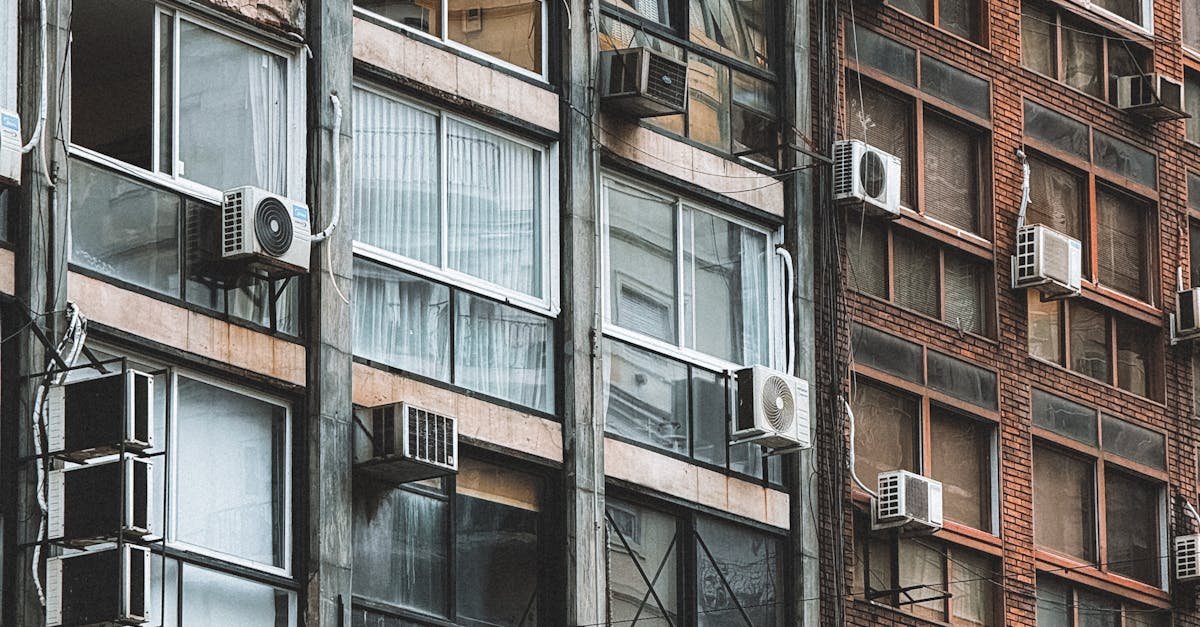
Components Involved in Control System Integration for Ducted Air Conditioning
Effective integration of control systems within ducted air conditioning setups greatly enhances overall performance. When components work seamlessly together, this leads to optimised energy use. Higher energy efficiency directly contributes to reduce...
Read more →
Importance of Control System Integration in Ducted Air Conditioning
The ability to maintain a stable indoor environment is crucial for overall comfort in ducted air conditioning systems. These systems rely on precise control mechanisms that adjust airflow and temperature throughout various areas of a home or building...
Read more →
Ensuring Safe Voltage and Current Usage in Ducted Air Conditioning Systems
The complexity of ducted air conditioning systems necessitates a professional approach to installation. Qualified technicians possess the expertise to assess the specific requirements of each home, ensuring the system is tailored for optimal performa...
Read more →
Voltage and Current Parameters for Efficient Ducted Air Conditioning Performance
Voltage drop occurs when electrical energy is lost as current travels through the conductors. This loss results in reduced power supply to appliances and can lead to inefficient operation of ducted air conditioning systems. The longer the distance be...
Read more →
Ducted Air Conditioning: Voltage and Current Considerations for Installation and Operation
Ducted air conditioning systems require a reliable power supply to function effectively. The installation of these systems often necessitates dedicated circuit breakers to handle the specific voltage and current requirements. Generally, the systems o...
Read more →
Navigating Voltage and Current Guidelines for Ducted Air Conditioning Projects
Proper wiring is essential for the efficiency and safety of ducted air conditioning systems. Selecting cables that can handle the specific voltage and current requirements is a critical step. It’s important to assess the load that the system will p...
Read more →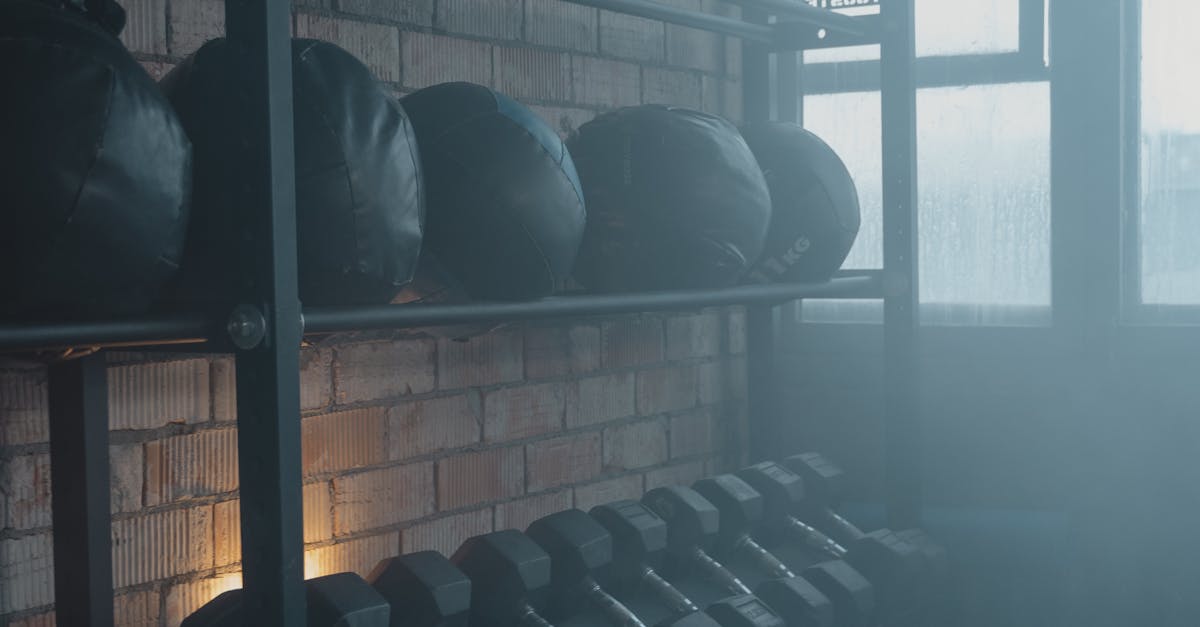
Meeting Electrical Standards: Voltage and Current Specifications for Ducted Air Conditioning
Proper wiring and installation are crucial for ducted air conditioning systems. It's essential to use wiring that meets the Australian Standards, ensuring the system operates efficiently and safely. For most residential installations, a minimum of 2....
Read more →
Evaluating Voltage and Current Compatibility for Ducted Air Conditioning Systems
Understanding the electrical supply in your home is essential before installing a ducted air conditioning system. The voltage rating must match the requirements of the unit to ensure optimal performance. Common voltage supplies in residential setting...
Read more →
Importance of Complying with Voltage and Current Specifications in Ducted Air Conditioning
Understanding the role of voltage and current in ducted air conditioning systems is essential for effective troubleshooting. Electrical issues often manifest as fluctuations in the system’s performance. This can lead to inadequate cooling and incre...
Read more →
Voltage and Current Requirements for Ducted Air Conditioning Installations
Ensuring compliance with safety regulations is fundamental when installing ducted air conditioning systems. These regulations not only protect the integrity of the installation but also guarantee the safety of the occupants. Adhering to the Electrica...
Read more →
Selecting the Right Voltage and Current Ratings for Ducted Air Conditioning Units
Setting the wrong voltage for a ducted air conditioning unit can lead to severe operational issues. Units designed for a specific voltage range may struggle or fail to perform efficiently when exposed to incorrect settings. Over-voltage can cause exc...
Read more →
Understanding Voltage and Current Specifications for Ducted Air Conditioning Systems
Air conditioning units must adhere to specific electrical safety standards to ensure both user safety and optimal performance. In Australia, these standards are established by the Australian and New Zealand Standard AS/NZS 60335.2.40, which focuses o...
Read more →
Implementing Best Practices for Electrical Safety in Ducted Air Conditioning Systems
Choosing the right equipment is fundamental in ensuring electrical safety during the installation and maintenance of ducted air conditioning systems. Tools must meet the required safety standards. Insulated tools can prevent accidental electrical sho...
Read more →
Role of Inspections and Audits in Ensuring Electrical Safety in Ducted Air Conditioning
Qualified professionals play a crucial role in maintaining the safety and functionality of ducted air conditioning systems. Their expertise ensures that installations meet industry standards and regulatory requirements. These professionals are traine...
Read more →
Training and Certification Requirements for Ducted Air Conditioning Electrical Safety Compliance
Staying abreast of the latest developments in ducted air conditioning technology and safety standards is crucial for professionals in the field. Ongoing education helps technicians enhance their skills and knowledge, ensuring they can effectively tac...
Read more →
Common Electrical Safety Violations in Ducted Air Conditioning Installations
The positioning of electrical components plays a crucial role in the safe operation of ducted air conditioning systems. When components are located too close to heat sources or in damp environments, the risk of damage increases significantly. Poor pl...
Read more →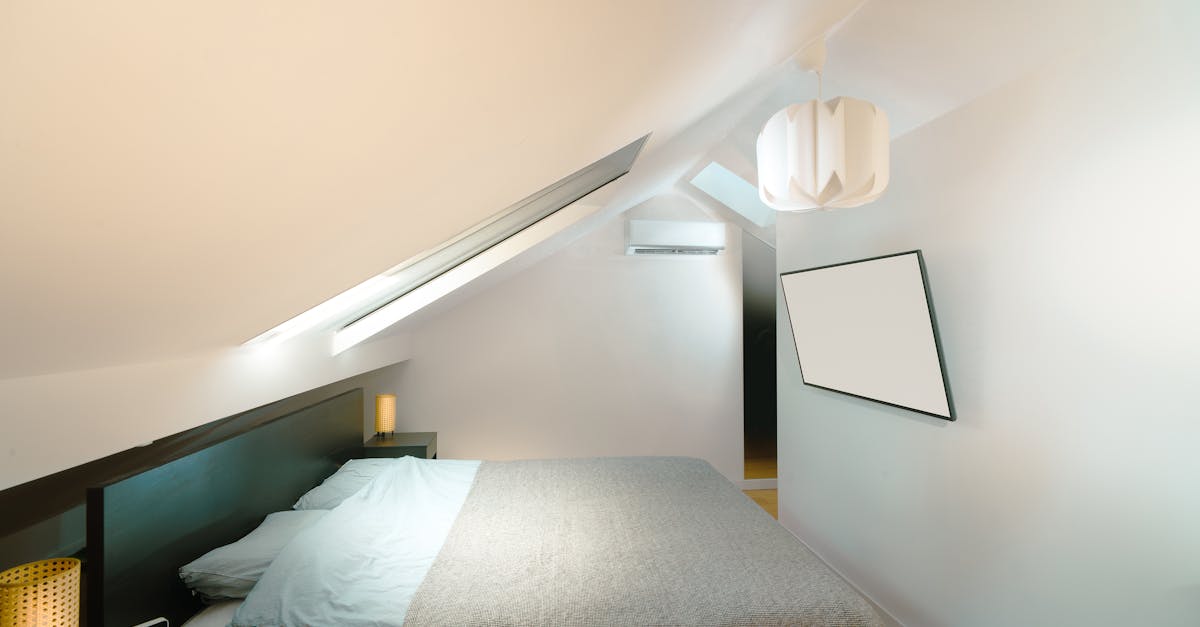
Key Elements of Electrical Safety Checks for Ducted Air Conditioning
Overheating is a significant risk in ducted air conditioning systems and can lead to serious hazards if not addressed. Heat buildup can occur due to various factors, including overworked components, inadequate airflow, or faulty wiring. Regular inspe...
Read more →
Ensuring Safe Electrical Installation in Ducted Air Conditioning Systems
Ducted air conditioning systems require precise electrical installations to function efficiently. One frequent mistake is underestimating the importance of adhering to local regulations and standards. Failing to comply can lead to serious safety risk...
Read more →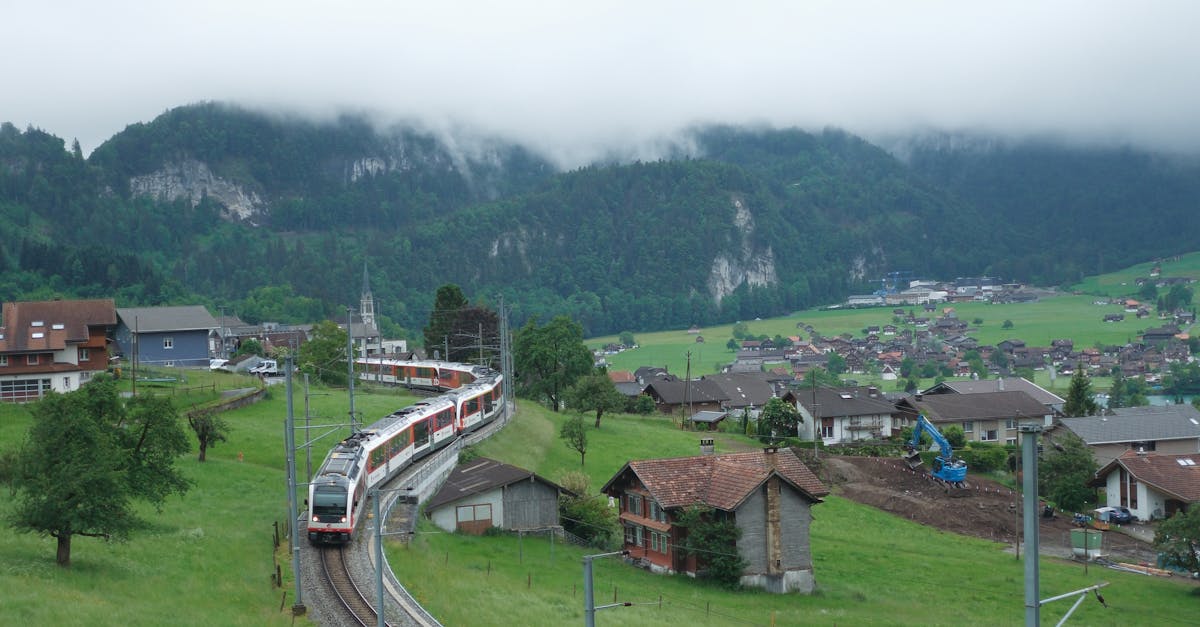
Understanding AS/NZS 3000 Wiring Rules for Ducted Air Conditioning
Accurate load calculations are essential for any ducted air conditioning system to function efficiently. Assessing the total electrical load involves considering various factors, including the size of the space being cooled, insulation quality, and l...
Read more →
Importance of Compliance with Australian Electrical Safety Standards
Achieving compliance with Australian electrical safety standards requires a systematic approach. This process typically begins with a thorough understanding of the relevant standards that govern electrical installations and maintenance. Professionals...
Read more →
Ducted Air Conditioning Wiring Compliance with Australian Standards
When installing ducted air conditioning systems, adherence to Australian standards is crucial for both safety and efficiency. Begin by ensuring that all components used in the installation, including cables and connectors, are rated for the specific ...
Read more →
Overview of Electrical Safety Standards for Ducted Air Conditioning
To ensure safe operation, regular maintenance of ducted air conditioning systems is paramount. Technicians should perform visual inspections to identify any wear on wiring or components. Cleaning filters and checking for proper airflow are essential ...
Read more →
Risk Assessment and Mitigation in Ducted Air Conditioning Electrical Systems
Professional technicians play a crucial role in ensuring the safety and efficiency of ducted air conditioning electrical systems. Their expertise covers a wide range of responsibilities, from the initial installation to routine maintenance and troubl...
Read more →
Safety Measures in Ducted Air Conditioning Wiring
Circuit breakers play a crucial role in the safety of ducted air conditioning systems. They are designed to interrupt the flow of electricity when an overload or short circuit occurs. This prevents potential hazards, such as electrical fires or damag...
Read more →
Installation Guidelines for Ducted Air Conditioning Wiring
The first step in the installation process involves setting up the indoor unit. It is essential to mount the air handler securely on a wall or ceiling, ensuring there is sufficient space for airflow and maintenance access. Once in place, the next tas...
Read more →
Upgrading Electrical Wiring for Ducted Air Conditioning
Circuit breakers serve a crucial function in electrical systems, acting as safety devices that prevent overloads and short circuits. When upgrading electrical wiring for ducted air conditioning, ensuring that the circuit breakers are compatible with ...
Read more →
Best Practices for Ducted Air Conditioning Circuit Layout
Appropriate insulation is vital for maximising the efficiency of ducted air conditioning systems. Various types of insulation materials, like fibre glass, foam board, or spray foam, provide different levels of thermal resistance. The effectiveness of...
Read more →
Key Components in Ducted Air Conditioning Wiring
Thermostats play a pivotal role in the effective operation of ducted air conditioning systems. They serve as the primary interface between the user and the system, allowing for precise temperature management across different zones within a home or co...
Read more →
Troubleshooting Ducted Air Conditioning Wiring Issues
Thermostat connections play a crucial role in the overall performance of ducted air conditioning systems. Begin by turning off the power to ensure safety during the inspection. Remove the thermostat cover to access the wiring. Check for any visible d...
Read more →
Wiring Diagrams for Ducted Air Conditioning Systems
When dealing with wiring for ducted air conditioning systems, prioritising safety is crucial. Always ensure that the power supply is completely disconnected before commencing any installation or repair work. Use insulated tools and wear appropriate p...
Read more →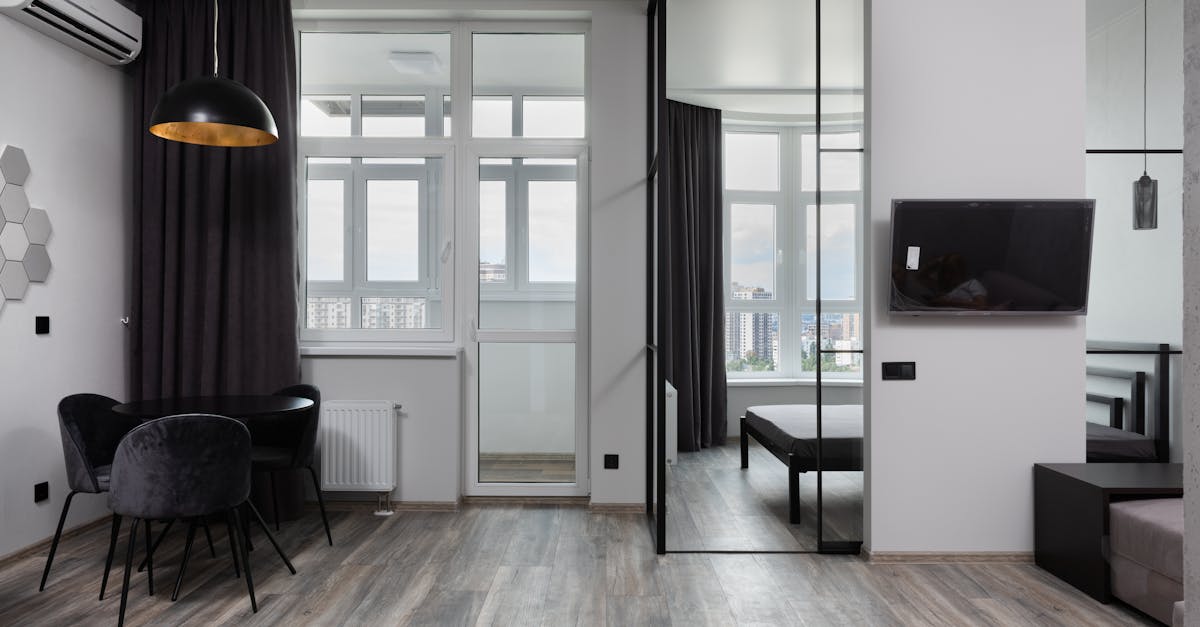
Understanding Circuit Layout for Ducted Air Conditioning
Designing an effective circuit layout for ducted air conditioning systems requires the right tools and software. Numerous options exist, ranging from basic drafting applications to advanced engineering software. CAD (Computer-Aided Design) programs e...
Read more →
Basic Principles of Ducted Air Conditioning Wiring
A well-equipped toolkit is essential for anyone attempting ducted air conditioning wiring installation. Basic tools include a screwdriver set, wire strippers, and pliers. A multimeter is crucial for testing voltages and ensuring safe connections. Add...
Read more →
Compliance with Electrical Safety Standards for Ducted Air Conditioning Power Supply
Ducted air conditioning systems require regular maintenance and thorough inspections to ensure they operate efficiently and safely. Scheduled maintenance helps identify potential issues before they escalate, which can reduce the risk of electrical fa...
Read more →
Integrating Power Supply with Control Systems for Ducted Air Conditioning
Many ducted air conditioning systems experience common issues related to integration between power supply and control systems. A frequent problem is an inconsistent power supply that leads to erratic operation. This can manifest as fluctuations in te...
Read more →
Sourcing Reliable Power for Ducted Air Conditioning Units
Power ratings play a crucial role in ensuring that ducted air conditioning units operate efficiently and reliably. Understanding the differences between kilowatts (kW) and kilovolt-amperes (kVA) is essential for selecting the right unit. kW measures ...
Read more →
Power Supply Sizing for Ducted Air Conditioning Systems
Australian Standards play a crucial role in ensuring that ducted air conditioning systems operate safely and efficiently. Compliance with these standards provides guidelines around energy efficiency, safety, and environmental responsibilities. These ...
Read more →
Ensuring Adequate Power Supply for Ducted Air Conditioning Installation
Ducted air conditioning systems often require specific electrical configurations to function optimally. Existing electrical infrastructure may not accommodate the increased load from these systems, leading to potential performance issues. Upgrading w...
Read more →
Selecting the Right Power Supply for Ducted Air Conditioning Units
Selecting the appropriate circuit wiring is essential for optimal operation of ducted air conditioning units. The capacity of the unit often dictates the wire gauge required to handle the electrical current without overheating. In general, thicker wi...
Read more →
Meeting Voltage and Current Specifications for Ducted Air Conditioning
Voltage irregularities can lead to significant performance issues in ducted air conditioning systems. Anomalies such as voltage drops or surges may cause the system to operate inefficiently or even fail entirely. Regular checks on the voltage can hel...
Read more →
Key Considerations for Powering Ducted Air Conditioning Units
Regular maintenance plays a crucial role in extending the lifespan of ducted air conditioning units. Scheduled inspections allow technicians to identify and address potential issues before they escalate into major problems. Cleaning or replacing filt...
Read more →
Determining the Electrical Load for Ducted Air Conditioning Systems
Accurate load calculations are crucial for optimal performance of ducted air conditioning systems. One prevalent mistake is neglecting to account for the thermal characteristics of the building. Many overlook factors such as insulation quality, windo...
Read more →
Understanding Power Supply Requirements for Ducted Air Conditioning Systems
Local electrical regulations play a crucial role in ensuring the safety and efficiency of ducted air conditioning installations. These regulations are guided by national standards and are enforced at local levels to address specific requirements that...
Read more →
Addressing Air Quality Concerns through Ductwork Maintenance
Regular inspection of your ductwork can significantly improve indoor air quality. Start by checking the vent covers for dust and debris. If they are dirty, remove them and wash with mild detergent. Look for any visible signs of mould or excessive dus...
Read more →
Implementing Energy-Efficient Practices in Ductwork Maintenance
Efficient airflow is critical for maintaining the comfort and efficiency of HVAC systems. One effective method to optimise airflow is by regularly cleaning ductwork to remove dust and debris that can significantly hinder performance. This cleaning he...
Read more →
Ductwork Maintenance Checklist for Homeowners
Homeowners often find themselves weighing the benefits of DIY ductwork maintenance against hiring professionals. Engaging in maintenance tasks such as cleaning vents and checking filters can be both cost-effective and satisfying for those who enjoy h...
Read more →
Effective Strategies for Seasonal Ductwork Maintenance
Regular inspections conducted by professionals significantly contribute to the longevity and efficiency of ductwork systems. These trained technicians bring expertise that allows them to identify potential issues that may go unnoticed by untrained ey...
Read more →
Common Ductwork Maintenance Challenges and Solutions
Excess moisture in ductwork can lead to numerous complications, including the growth of mould and the deterioration of materials. Identifying sources of humidity is crucial in maintaining a dry and efficient system. Regular inspections can help detec...
Read more →
The Role of Professional Ductwork Maintenance Services
Indoor air quality significantly affects overall health and comfort. Over time, dust, allergens, and mould can accumulate within duct systems, circulating harmful particles throughout the living space. Regular maintenance helps to identify and elimin...
Read more →
Tips for Extending the Lifespan of Ductwork Systems
Regular cleaning of ductwork is essential for maintaining indoor air quality and improving system efficiency. Dust and debris can accumulate over time, obstructing airflow and forcing the system to work harder. Using a vacuum designed for duct cleani...
Read more →
Understanding Duct Cleaning Techniques
Cleaning your ducts at home can be a manageable task for those willing to invest some time and effort. First, it's crucial to gather the right tools. A vacuum with a long hose attachment, microfiber cloths, and a brush designed for duct cleaning will...
Read more →
Key Steps for Preventative Ductwork Maintenance
Air leaks in ductwork can significantly diminish the efficiency of your heating and cooling systems. Addressing these leaks not only improves comfort but also reduces energy consumption. Common areas prone to leaks include connections between differe...
Read more →
Importance of Regular Ductwork Inspections
Determining whether to hire a professional or conduct a DIY ductwork inspection often hinges on the complexity of the system and the experience of the homeowner. Professionals possess the training and equipment necessary to assess the entire duct sys...
Read more →
Importance of Professional Assessment for Optimal Airflow Distribution in Ducted Air Conditioning Systems
Ducted air conditioning systems are designed to deliver conditioned air efficiently throughout a building. When airflow is not optimally distributed, the system struggles to maintain desired temperatures, leading to increased energy consumption. As a...
Read more →
The Role of Airflow Distribution in Maintaining Air Quality in Ducted Air Conditioning
Effective airflow distribution plays a critical role in the overall energy efficiency of ducted air conditioning systems. When air circulates evenly throughout a space, it prevents hotspots and cold drafts, ensuring that the system does not have to w...
Read more →
Enhancing Comfort and Energy Efficiency Through Effective Airflow Distribution in Ducted Systems
Optimising the duct layout is crucial in achieving balanced airflow throughout a space. This involves careful planning of duct size and route, ensuring that ducts are not excessively long or filled with unnecessary bends. A well-designed duct system ...
Read more →
Common Challenges and Solutions in Airflow Distribution for Ducted Air Conditioning
Achieving uniform airflow throughout various rooms in a ducted air conditioning system is crucial for ensuring comfort and efficiency. It often requires careful planning of duct layout to accommodate different room sizes and configurations. Each room...
Read more →
Achieving Even Airflow Distribution in Ducted Air Conditioning Through Proper Design
Choosing the right duct material can significantly influence the efficiency and performance of a ducted air conditioning system. Galvanised steel is a popular option due to its durability and resistance to dents and corrosion. It also provides a smoo...
Read more →
Key Factors Affecting Airflow Distribution in Ducted Air Conditioning
The placement of supply and return vents plays a critical role in maintaining balanced airflow throughout a ducted air conditioning system. Ideally, supply vents should be located strategically throughout a space to ensure even distribution of cool o...
Read more →
Balancing Airflow Distribution for Consistent Temperature Control in Ducted Systems
Consistent temperature control in ducted systems significantly enhances indoor comfort, creating a more pleasant living environment. When temperatures are uniform throughout a space, occupants experience fewer temperature fluctuations. This quality l...
Read more →
Understanding the Impact of Airflow Distribution on Ducted Air Conditioning Performance
Insulation plays a pivotal role in enhancing airflow efficiency within ducted air conditioning systems. When ducts are properly insulated, the temperature of the conditioned air remains consistent as it travels through the network. This reduces the e...
Read more →
Strategies for Optimizing Airflow Distribution in Ducted Air Conditioning
Routine checks and servicing are crucial for ensuring that ducted air conditioning systems operate efficiently. Regular cleaning of filters prevents dirt and debris build-up, which can obstruct airflow and hinder performance. It is also important to ...
Read more →
Importance of Airflow Distribution in Efficient Ducted Air Conditioning Systems
Air filters are fundamental components in ducted air conditioning systems, contributing significantly to the overall performance and efficiency. These filters capture dust, allergens, and other airborne particles as air flows through the system. By p...
Read more →
Assessing the Overall Cost Benefits of Quality Insulation in Ductwork for Air Conditioning Systems
The performance of HVAC systems significantly relies on the quality of insulation applied to ductwork. Proper insulation minimises heat loss or gain as air travels through ducts, ensuring that the conditioned air reaches its intended location with mi...
Read more →
Common Mistakes to Avoid in Insulating Ductwork for Air Conditioning
Proper vent placement is crucial for achieving optimal air distribution within an air conditioning system. Vents positioned too close to each other can create areas of stagnant air, leading to uneven cooling and inefficiency. On the other hand, vents...
Read more →
Compliance and Regulations for Insulation in Ductwork for Air Conditioning Systems
Proper installation of insulation in ductwork is crucial to optimise the efficiency of air conditioning systems. Selection of high-quality insulation materials is essential. Products should meet the Australian standards for thermal performance and fi...
Read more →
Evaluating Thermal Conductivity in Insulation for Ductwork in Air Conditioning Systems
Various materials are utilised for ductwork insulation, each offering distinct advantages. Fibreglass remains a popular choice due to its lightweight nature and non-combustible properties. It exhibits excellent resistance to moisture, reducing the ri...
Read more →
Guidelines for Insulating Ductwork in Different Climate Zones for Air Conditioning
Choosing the appropriate insulation material for ductwork requires careful consideration of the climate zone and specific requirements of the space being cooled. Various materials offer different thermal resistance properties, moisture control capabi...
Read more →
Impact of Poor Insulation on Energy Efficiency in Ductwork for Air Conditioning
Inefficient insulation in ductwork can lead to significant energy loss, ultimately compromising the performance of the entire HVAC system. When ducts are poorly insulated, conditioned air escapes into unconditioned spaces, forcing the system to work ...
Read more →
Understanding the R-Value in Insulation for Ductwork in Air Conditioning Systems
When selecting the appropriate R-Value for ductwork insulation, considerations often include climate, location, and type of building. In warmer regions, lower R-Values may suffice to prevent excessive heat gain, while colder climates generally requir...
Read more →
Types of Insulation Materials for Ductwork in Air Conditioning Systems
Derived primarily from recycled paper products, cellulose insulation is a popular choice for energy efficiency in air conditioning systems. This material is treated with fire retardants and pest control additives, ensuring that it meets safety standa...
Read more →
Importance of Proper Insulation in Ductwork Design for Air Conditioning Systems
Proper insulation in ductwork plays a pivotal role in enhancing energy efficiency within air conditioning systems. Insulated ducts minimise heat transfer, which means less energy is required to maintain desired indoor temperatures. This reduction in ...
Read more →
Best Practices for Installing Insulation in Ductwork for Air Conditioning
Proper insulation installation in ductwork significantly enhances the efficiency of air conditioning systems. Begin by selecting the right type of insulation material, such as fiberglass or foam. Ensure that the insulation has a suitable R-value for ...
Read more →
Compliance and Regulatory Considerations in Duct Material Selection for Ducted Air Conditioning Systems
Understanding the regulatory framework surrounding duct materials is essential for ensuring safety in air conditioning systems. Australian Standards, particularly AS 1668, outline the fire safety requirements for ducted air conditioning, mandating th...
Read more →
Comparison of Steel, Aluminium, and Fiberglass Duct Materials for Ducted Air Conditioning
Steel ducting is renowned for its exceptional durability, often lasting several decades when properly maintained. Its resistance to impact and extreme temperatures makes it an ideal choice in environments where other materials may struggle. Regular i...
Read more →
Heat Resistance and Insulation Properties of Duct Materials for Ducted Air Conditioning
The design of air ducts plays a pivotal role in determining their heat resistance capabilities. Factors such as duct shape, size, and material significantly influence the thermal performance of an air conditioning system. For instance, round ducts of...
Read more →
Cost Analysis of Different Duct Materials for Ducted Air Conditioning Systems
Insulated ducts play a significant role in enhancing the energy efficiency of ducted air conditioning systems. These ducts are often composed of a range of materials, including flexible plastic with insulation layers or rigid metal varieties wrapped ...
Read more →
Corrosion Resistance and Durability of Duct Materials for Ducted Air Conditioning
Regular inspections of duct systems are crucial for identifying wear and tear. Visually checking for signs of corrosion, leaks, and blockages can prevent minor issues from escalating into major problems. Implementing a routine cleaning schedule helps...
Read more →
Environmental Sustainability of Duct Materials for Ducted Air Conditioning in Australia
In Australia, the regulatory framework for duct materials plays a crucial role in ensuring environmental sustainability in the HVAC sector. Industry standards set by the Australian Building Codes Board (ABCB) and other relevant authorities outline re...
Read more →
Factors to Consider When Selecting Duct Materials for Ducted Air Conditioning Systems
The choice of duct materials significantly impacts the airflow and overall performance of ducted air conditioning systems. Materials with smooth interior surfaces facilitate efficient airflow, reducing resistance and allowing for optimal performance....
Read more →
Understanding the Impact of Duct Material on Air Quality in Ducted Air Conditioning
Ducted air conditioning systems can become a breeding ground for various contaminants that compromise indoor air quality. Dust, pollen, and pet dander often accumulate within the ducts over time. These particulates can circulate throughout the living...
Read more →
Benefits and Limitations of Common Duct Materials in Air Conditioning Systems
Flexible ducts offer convenience in terms of installation and adaptability to various layouts. However, they are prone to several downsides that can affect their long-term efficiency. Their lightweight materials may lead to physical damage from exter...
Read more →
Overview of Duct Material Selection for Ducted Air Conditioning
The choice of duct materials plays a significant role in environmental sustainability. Traditional materials like aluminium and galvanised steel are durable but can have a higher carbon footprint due to energy-intensive production processes. Converse...
Read more →
Evaluating the Impact of Duct Layout and Sizing on Air Conditioning Energy Efficiency
Air leaks in duct systems can significantly diminish the efficiency of air conditioning units. These leaks can occur at various points along the ductwork, such as joints, seams, and any areas where the duct meets connection points. Identifying these ...
Read more →
Duct Sizing Techniques for Zoning in Ducted Air Conditioning Systems
Incorrect duct sizing can lead to numerous efficiency issues in ducted air conditioning systems. One common mistake is failing to account for the length and layout of the ductwork. Longer ducts can create additional resistance, requiring larger diame...
Read more →
Achieving Optimal Airflow Distribution Through Effective Duct Layout and Sizing
Poor duct design often stems from inadequate sizing. Oversized ducts can lead to airflow noise while undersized ducts create resistance, resulting in reduced efficiency. These issues may not manifest immediately but tend to cause long-term problems i...
Read more →
Duct Sizing Considerations for Variable Air Volume (VAV) Ducted Air Conditioning Systems
When designing ducted air conditioning systems, understanding pressure loss within the ductwork is crucial. Pressure loss occurs due to friction between the moving air and the duct's interior surfaces. Factors affecting this loss include duct length,...
Read more →
Balancing Duct Layout and Sizing for Enhanced Air Conditioning Performance
Insulation serves a crucial function in duct systems by minimising thermal energy loss and maintaining consistent temperatures throughout the airflow path. When ducts carry cooled or heated air, they can absorb or lose heat to the surrounding environ...
Read more →
Best Practices for Duct Sizing in Ducted Air Conditioning Installations
Accurate duct measurement is essential for ensuring efficient airflow and optimal performance in ducted air conditioning systems. A good quality tape measure is a fundamental tool for measuring the dimensions of both existing ducts and spaces for new...
Read more →
Understanding the Impact of Duct Layout on Airflow Efficiency in Air Conditioning
An optimised duct layout significantly improves the efficiency of air conditioning systems. Well-designed ducts minimise bends and turns, allowing air to flow freely and reducing the workload on the HVAC unit. This efficiency translates into lower en...
Read more →
Optimizing Duct Sizing for Commercial Air Conditioning Systems
The choice of materials significantly affects duct sizing and overall system performance. Metal ducts, often perceived as more durable and reliable, can vary in insulation thickness, which influences thermal conductivity. The potential for thermal ex...
Read more →
Principles of Efficient Duct Layout and Sizing for Air Conditioning Systems
Insulation plays a vital role in maintaining the efficiency of ducted air conditioning systems. Proper insulation reduces heat transfer between the air within the ducts and the surrounding environment. This is crucial in both cooling and heating appl...
Read more →
Troubleshooting Electrical Connections in Ducted Air Conditioning Systems
Inspecting wiring connections is crucial for the efficient operation of ducted air conditioning systems. Loose wires can lead to intermittent power supply issues, while damaged insulation could expose wires to short-circuits. Start by visually examin...
Read more →
Key Factors to Consider in Duct Layout and Sizing for Residential Air Conditioning
Duct leaks can significantly impact the efficiency of a residential air conditioning system. Identifying potential leak points should be a priority during the installation process. Common areas prone to leaks include joints, seams, and where the duct...
Read more →
Ensuring Safety in Connecting and Testing Electrical Components for Ducted Air Conditioning
Ensuring safety during the testing of electrical components is essential for both personal protection and the integrity of the ducted air conditioning system. Before beginning any testing procedure, it is crucial to disconnect the power supply to pre...
Read more →
Importance of Professional Electrical Testing in Ducted Air Conditioning
Professionals employ a variety of testing methods to ensure the reliable operation of ducted air conditioning systems. One common method involves the use of multimeters, which measure voltage, current, and resistance levels within the electrical comp...
Read more →
Ensuring Compliance with Electrical Standards in Ducted Air Conditioning
Ducted air conditioning systems present several compliance challenges that require careful attention. One major issue is the correct installation of the ductwork. Inadequate sealing or improper insulation can lead to significant energy losses. These ...
Read more →
Common Electrical Issues in Ducted Air Conditioning Installation
Issues with refrigerant lines can significantly impact the efficiency and effectiveness of ducted air conditioning systems. When lines are improperly installed, the potential for refrigerant leaks increases, leading to inadequate cooling and heighten...
Read more →
Key Considerations for Electrical Wiring in Ducted Air Conditioning Systems
When installing electrical wiring for ducted air conditioning systems, ensuring compliance with local codes and regulations is crucial. Sufficient planning is essential for optimal placement of wiring runs to avoid any future complications. It is wis...
Read more →
Testing Electrical Components for Optimal Performance in Ducted Air Conditioning
Test results offer vital insights into the functionality of electrical components within ducted air conditioning systems. Each measurement should be cross-referenced with the specifications provided by the manufacturer. Discrepancies can indicate pot...
Read more →
Understanding Electrical Requirements for Ducted Air Conditioning Installation
When considering a ducted air conditioning installation, wiring specifications play a crucial role in ensuring the system operates efficiently and safely. The wiring used must be capable of handling the load of the air conditioning unit. Typically, a...
Read more →
Steps for Safely Connecting Electrical Components in Ducted Air Conditioning
Before beginning any electrical work, it's crucial to gather all necessary tools and materials. Ensure you have wire strippers, electrical tape, and appropriate connectors on hand. Always switch off the power supply to the ducted air conditioning uni...
Read more →
Importance of Proper Electrical Connection in Ducted Air Conditioning Systems
Qualified electricians bring essential expertise to the installation and maintenance of ducted air conditioning systems. Their training ensures they have a comprehensive understanding of electrical systems, circuit designs, and safety protocols. This...
Read more →
Troubleshooting and Troubleshooting the Air Handler in Ducted Air Conditioning Systems
Regular maintenance of filters in air conditioning systems is crucial for maintaining optimal airflow and indoor air quality. Dirty or clogged filters can restrict airflow, leading to decreased efficiency and higher energy consumption. When filters a...
Read more →
Incorporating Smart Technology with the Air Handler in Ducted Air Conditioning Systems
Modern ducted air conditioning systems equipped with smart technology now offer intuitive user interfaces that simplify operation. Touchscreen panels and mobile app integration make it easy for users to adjust settings, set schedules, and monitor per...
Read more →
Common Challenges and Solutions When Installing the Air Handler in Ducted Air Conditioning
Noise levels can significantly impact indoor comfort. Select the appropriate location for the air handler to minimise sound transmission. Avoid positioning it near bedrooms or living areas. Adding acoustic insulation to the walls surrounding the unit...
Read more →
Upgrading the Air Handler in Ducted Air Conditioning: What You Need to Know
Air handlers come in various models, each designed to meet specific needs and preferences. The primary distinctions often lie in their airflow capacity and energy efficiency ratings. Some models are built for larger homes, equipped to handle higher a...
Read more →
Energy Efficiency Considerations When Installing the Air Handler in Ducted Air Conditioning
The design of ductwork plays a crucial role in the overall efficiency of a ducted air conditioning system. Well-planned duct layouts allow for optimal airflow, reducing resistance and ensuring that conditioned air reaches every corner of a space. The...
Read more →
Proper Maintenance and Care for the Air Handler in Ducted Air Conditioning Systems
Regular inspections of ductwork connections are essential for maintaining an efficient ducted air conditioning system. Any gaps or leaks can cause substantial energy losses, making the system work harder to achieve the desired temperature. It's advis...
Read more →
Tools and Equipment Needed for Installing the Air Handler in Ducted Air Conditioning
When it comes to installing an air handler, having the right lifting equipment is crucial. Lifting the air handler safely and efficiently requires appropriate hoisting tools that can support its weight and dimensions. Equipment such as hydraulic lift...
Read more →
Safety Precautions for Installing the Air Handler in Ducted Air Conditioning Systems
Conducting a thorough ductwork inspection is essential before installing the air handler. Ducts can accumulate dust, debris, and even mould over time, all of which can negatively impact the efficiency of the air conditioning system. Inspecting for an...
Read more →
Step-by-Step Guide to Installing the Air Handler for Ducted Air Conditioning
Ensuring a tight connection between ducts is essential for the efficient operation of your ducted air conditioning system. Begin by measuring the lengths of duct required to connect the air handler to the supply registers. Use flexible ducting where ...
Read more →
Understanding the Role of the Air Handler in Ducted Air Conditioning Systems
Air handlers serve a crucial role in regulating indoor climate, yet they are not without their challenges. One common issue arises from dust and debris accumulation within the unit. This can lead to reduced airflow and inefficient operation, potentia...
Read more →
Upgrading and Retrofitting Ductwork in Existing Ducted Air Conditioning Systems
Retrofitting existing ductwork presents a significant opportunity for improving energy efficiency in ducted air conditioning systems. By sealing leaks and insulating ducts, systems can operate more effectively, reducing the amount of energy lost duri...
Read more →
Maintenance and Cleaning Guidelines for Ductwork in Ducted Air Conditioning
When it comes to duct cleaning, the choice between professional services and DIY efforts often depends on various factors. Homeowners who tackle duct cleaning themselves may find it cost-effective, but they might not achieve the thoroughness that pro...
Read more →
Ductwork Installation Best Practices for Ducted Air Conditioning Systems
Proper sealing of duct joints is crucial to ensure optimal performance and efficiency of ducted air conditioning systems. Leaks in these connections can lead to substantial energy loss, resulting in increased utility costs and inadequate climate cont...
Read more →
Sealing and Jointing Methods for Ductwork in Ducted Air Conditioning
Proper connections in ductwork are crucial for maintaining efficient airflow and reducing energy costs. Various jointing methods are employed to ensure durability and performance. Mechanical joints are common, using screws or bolts for secure fasteni...
Read more →
Insulation Requirements for Ductwork in Ducted Air Conditioning Systems
Effective insulation is crucial for maximizing the efficiency of ducted air conditioning systems. When insulation is inadequate, it can lead to significant temperature fluctuations within the ductwork. This forces the system to work harder to maintai...
Read more →
Ductwork Layout and Configuration for Optimal Airflow in Ducted Air Conditioning
Various materials are utilised in the construction of ducts, each offering distinct characteristics that cater to different installation needs. Galvanised steel is a common choice due to its durability and resistance to corrosion, making it suitable ...
Read more →
Types of Ductwork Materials for Ducted Air Conditioning Systems
Ductwork made from rigid materials is known for its structural stability and resistance to deformation. Typically constructed from sheet metal or other rigid substances, these ducts maintain their shape and integrity, ensuring optimal airflow through...
Read more →
Sizing and Design Considerations for Ductwork in Ducted Air Conditioning
The effective placement of ductwork is crucial for maximizing the efficiency of a ducted air conditioning system. It is essential to consider the layout of the building, including room sizes and their intended use. Strategically positioning ducts clo...
Read more →
Factors to Consider When Choosing Ductwork for Ducted Air Conditioning
Air leakage in ductwork can significantly impact the performance and efficiency of ducted air conditioning systems. Gaps and cracks in the ductwork can lead to cooled or heated air escaping before it reaches its intended destination. This can result ...
Read more →
Understanding the Importance of Proper Ductwork in Ducted Air Conditioning
Insulating ductwork plays a crucial role in maintaining energy efficiency within ducted air conditioning systems. Proper insulation prevents the loss of conditioned air as it travels through the ducts. This reduction in energy waste leads to lower ut...
Read more →
Importance of Professional Assessment in Determining the Sizing and Capacity of Ducted Air Conditioning Systems
Selecting a qualified professional for assessing ducted air conditioning systems is crucial. Look for individuals or companies that possess relevant certifications and extensive experience in HVAC (Heating, Ventilation, and Air Conditioning) systems....
Read more →
Sizing and Capacity Considerations for Ducted Air Conditioning in Commercial Buildings
Understanding local climate conditions is essential for accurate sizing of ducted air conditioning systems. Factors such as average temperature highs and lows, humidity levels, and seasonal variations can significantly affect the cooling load calcula...
Read more →
Assessing Ducted Air Conditioning Capacity for Climate and Location Variations
Home insulation plays a crucial role in determining the effectiveness of ducted air conditioning systems. High-quality insulation reduces the amount of heat loss in winter and heat gain in summer. This stability in indoor temperatures means that the ...
Read more →
Sizing Considerations for Zoning and Multi-Zone Ducted Air Conditioning Systems
Understanding the specific heat load requirements of a space is crucial for ensuring the efficiency and comfort of an air conditioning system. It involves calculating the total amount of heat generated within that space, including factors such as occ...
Read more →
Impact of Ducted Air Conditioning Sizing on Energy Efficiency and Operating Costs
Determining the appropriate size for a ducted air conditioning system is essential for ensuring optimal performance and efficiency. Sizing requires an accurate assessment of various factors, including the dimensions of the space to be cooled, the num...
Read more →
Matching Ducted Air Conditioning Capacity to Building Insulation and Efficiency
Many people assume that larger air conditioning units always provide better cooling. This notion mistakenly equates size with efficiency, leading to potential oversizing of systems. When an air conditioning unit is too large for a space, it can cool ...
Read more →
Calculating the Correct Size of Ducted Air Conditioning for Different Room Types
Ceiling height plays a crucial role in determining the appropriate size of a ducted air conditioning system. Higher ceilings allow for greater air volume, which can affect the distribution and effectiveness of cooling or heating. When assessing room ...
Read more →
Understanding the Importance of Correct Sizing for Ducted Air Conditioning
Proper sizing of ducted air conditioning systems relies heavily on various environmental and structural factors. The local climate plays a significant role, as regions with more extreme temperatures may require more robust systems to maintain comfort...
Read more →
Evaluating the Cooling Load Requirements for Proper Sizing of Ducted Air Conditioning
The number of occupants in a space significantly impacts the cooling load requirements. Each individual contributes to the overall thermal load through body heat, moisture, and activities. Understanding the peak occupancy levels is essential for accu...
Read more →
Factors to Consider When Determining the Capacity of Ducted Air Conditioning Systems
The number of occupants in a space plays a significant role in determining the appropriate cooling capacity of ducted air conditioning systems. More people generate additional heat, leading to increased demand for cooling. Understanding occupancy lev...
Read more →
Exploring Location Options for Ducted Air Conditioning Installation
When planning for ducted air conditioning installation, the availability of an electrical supply is a crucial factor. This will ensure that the system functions efficiently and continuously meets the cooling demands of the property. Ideally, the outd...
Read more →
Maximizing Efficiency: Selecting the Most Suitable Location for Ducted Air Conditioning
Air conditioning systems are often rated for energy efficiency, with the star rating system providing a straightforward guide for consumers. A higher star rating indicates better performance in terms of energy consumption and cooling capacity. These ...
Read more →
Factors Influencing the Selection of the Right Location for Ducted Air Conditioning
Choosing the right location for ducted air conditioning often involves careful consideration of budget constraints. The initial investment can vary significantly based on the location selected within the property. Areas that require more extensive du...
Read more →
Selecting the Right Location for Ducted Air Conditioning: A Comprehensive Guide
When selecting a location for ducted air conditioning, noise levels must be taken into account. The placement of units can significantly influence the amount of sound transmitted to living spaces. Positioning the outdoor unit away from bedrooms and e...
Read more →
Best Practices for Selecting the Right Location for Ducted Air Conditioning Installation
Understanding the variations in temperature zones within a property is essential for optimal ducted air conditioning installation. Different areas of a home can experience distinct temperature levels due to factors such as sunlight exposure, insulati...
Read more →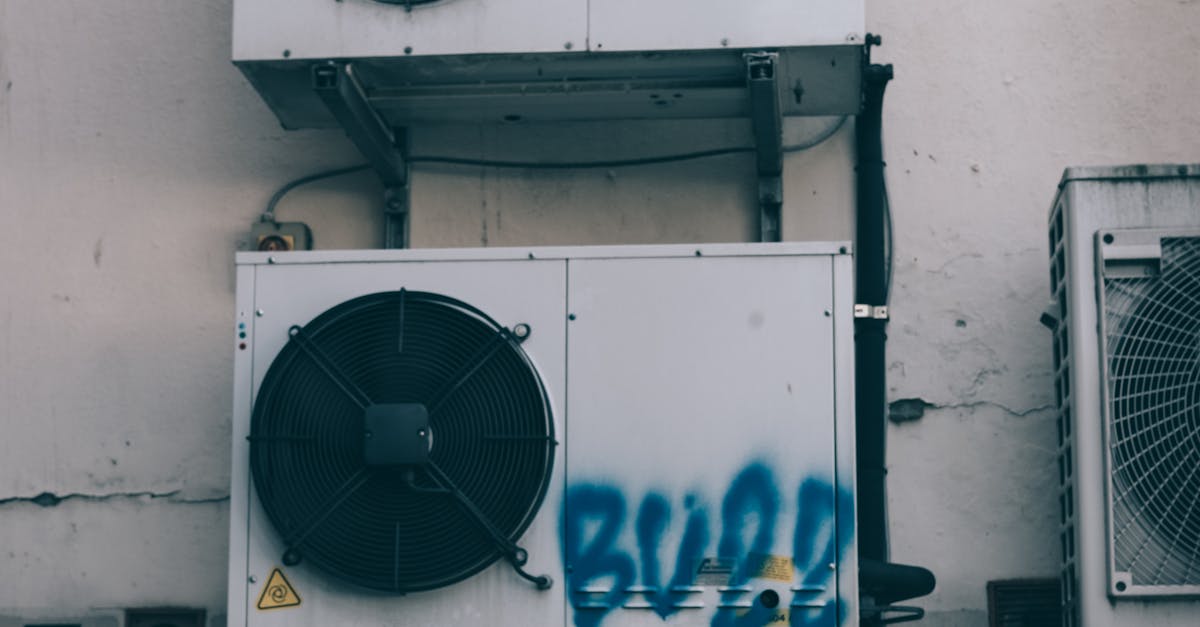
Key Considerations for Selecting the Right Location for Ducted Air Conditioning
When selecting a location for ducted air conditioning, climate factors play a crucial role. Understanding the particular weather patterns and temperature fluctuations of the area can significantly influence the system's performance and efficiency. In...
Read more →
How to Determine the Ideal Location for Ducted Air Conditioning in Your Property
Evaluating the existing ductwork in a property is essential when considering the installation of a new ducted air conditioning system. Age, condition, and size of the ducts play a critical role in determining their efficiency. Inspecting for any sign...
Read more →
Tips for Choosing the Optimal Location for Ducted Air Conditioning Installation
When selecting a location for ducted air conditioning installation, considering potential future home upgrades is essential. Homeowners should envision how their living space may evolve, such as adding new rooms or renovating existing areas. Taking i...
Read more →
Factors to Consider When Selecting the Right Location for Ducted Air Conditioning
Selecting a location for ducted air conditioning systems necessitates careful consideration of the existing infrastructure. The presence of water, electrical lines, and ductwork can significantly affect both installation efforts and costs. When these...
Read more →
Importance of Selecting the Right Location for Ducted Air Conditioning in Your Home
Sunlight exposure plays a crucial role in the effectiveness of ducted air conditioning systems. Areas receiving direct sunlight during peak hours tend to heat up more significantly. This increase in temperature can strain the air conditioning system,...
Read more →